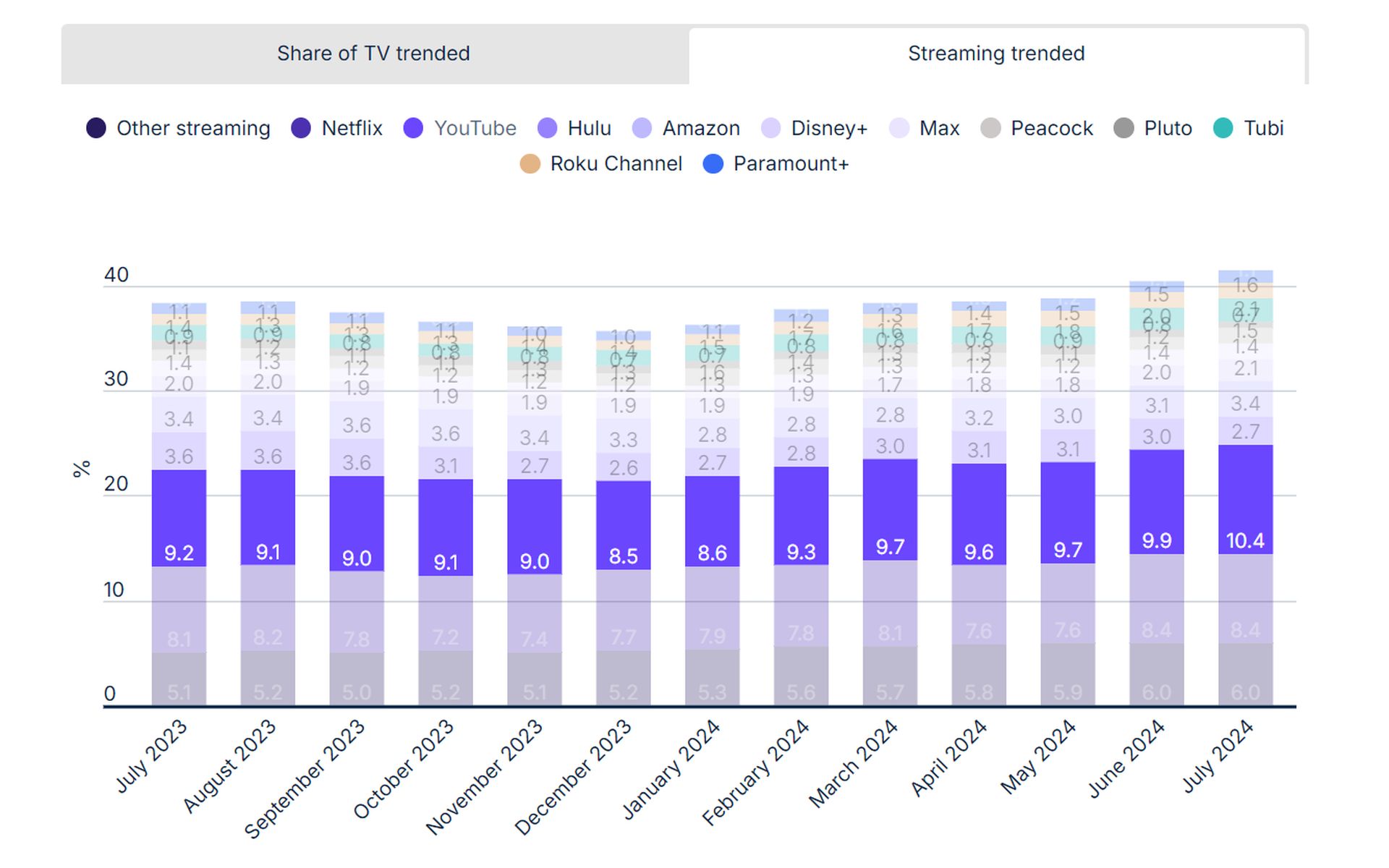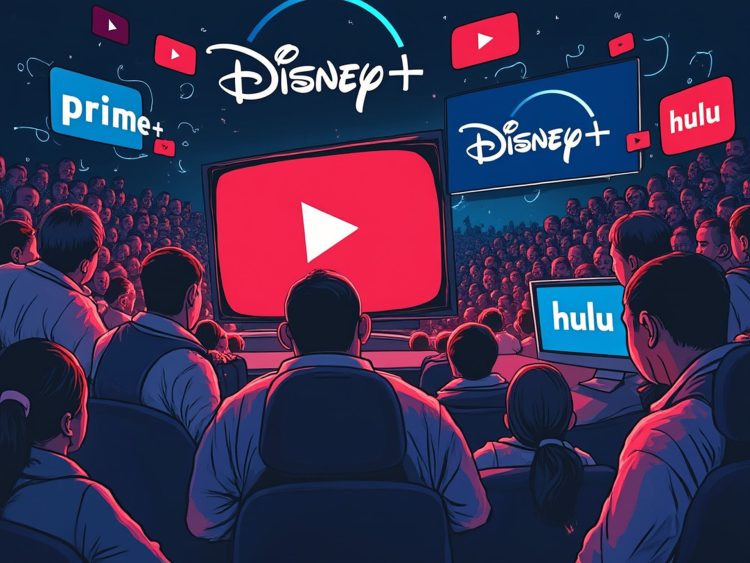Move over, Prime, Disney+, Hulu, and other streaming services—YouTube just left you all in the dust. According to the latest Nielsen TV and streaming report, YouTube has become the first streaming platform to break into double digits, now accounting for 10.4% of all TV viewing in the U.S. Here is the full list:
- YouTube: 10.4%
- Netflix: 8.4%
- Other Streaming: 6.0%
- Prime Video: 3.4%
- Hulu (SVOD): 2.7%
- Disney+: 2.1%
- Tubi: 2.1%
- Roku Channel: 1.6%
- Peacock: 1.5%
- Max: 1.4%
- Paramount+: 1.1%
- Pluto TV: 0.7%
It’s an epic leap that puts YouTube miles ahead of its competitors, proving that it’s not just a player in the streaming game.
Streaming is now the top choice for TV-watching, and YouTube is leading it
Nielsen’s recent report, The Gauge, shows that streaming has become the most popular way to watch TV. In July, streaming made up a massive 41.4% of all TV viewing in the U.S., a record high. This was a jump of over 5% from June, showing that more and more people are moving away from traditional TV to streaming. And at the top of this streaming wave? YouTube.

Traditional TV—both broadcast and cable—is still holding on to its audience, but it is shrinking. Streaming services are growing fast, with YouTube leading the pack. Nielsen highlighted this shift, noting, “Streaming made TV history for a second consecutive month in July… streaming levels were over 5% higher in July than June.” YouTube isn’t just staying ahead; it’s breaking new ground.
Younger audiences are choosing YouTube over everything else
What makes YouTube’s success even more impressive is that it happened even while big events like the Olympics were on TV. Despite such major events that usually draw viewers to traditional TV or other streaming services, YouTube’s numbers kept climbing. The reason? Younger audiences. Teens and young adults prefer YouTube over traditional TV, and this trend isn’t slowing down.

The future of TV is here, and it’s streaming
Marketers also should care about YouTube because it has become the leading platform for reaching large, targeted audiences. Unlike traditional TV, which casts a wide net, YouTube allows for precise targeting, resulting in better engagement and more effective ad spending. As traditional TV’s popularity declines, investing in YouTube advertising offers brands higher returns and aligns with the future of content consumption, where viewers prefer on-demand streaming over scheduled TV shows.
Featured image credit: Eray Eliaçık/Bing





